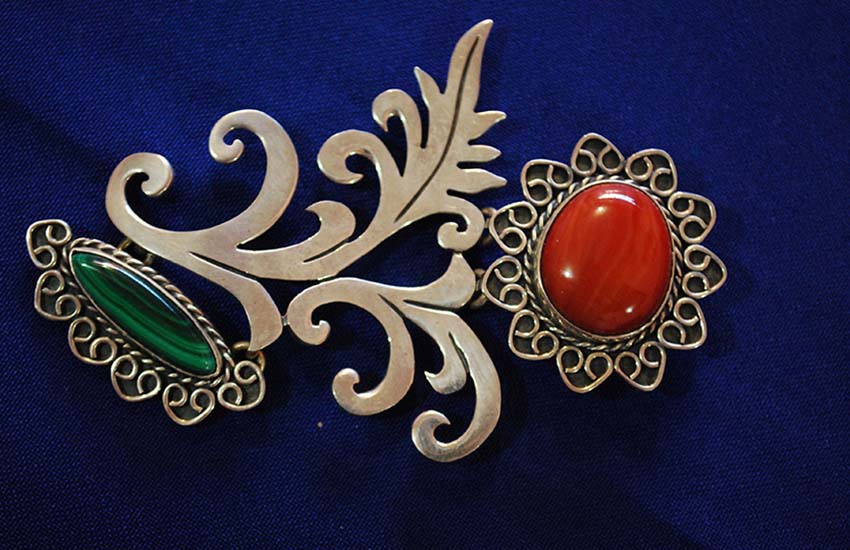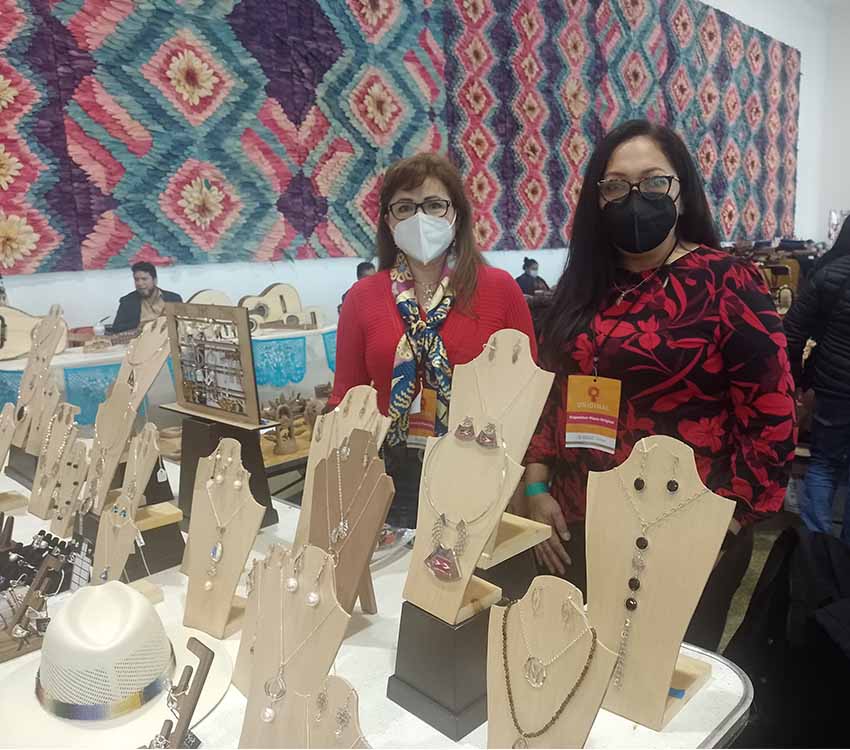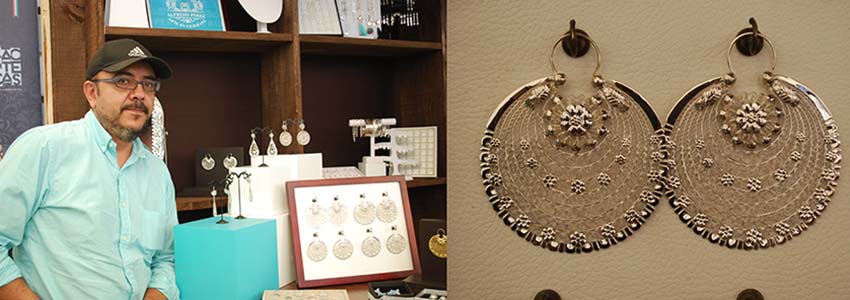It is hard to overstate silver’s historic and current importance to Mexico. Despite centuries of sacking, Mexico still is the leading producer of silver ore in the world.
But with the exception of Taxco, Guerrero, Mexican silversmithing is unknown, and that is a shame.
Silver crafting was important in the colonial period, but afterward much of it died out. Some did survive, but most silversmithing done today does not have an uninterrupted history.
Most is the result of revival efforts, although some is new. But so far, only the silver of Taxco has received international attention.
One area where silverwork is growing is in the north of Mexico. Many mines still operate here, so silver is produced and exported, but this is not where the real money is.

The profitability lies in the final product, and artisans and others are looking to capitalize on this. Here are three examples of silverwork stories to give a sense of what is out there.
Alfredo Pérez Aguirre is a silversmith in the Pueblo Mágico of Jerez, Zacatecas. This state straddles the cultural divide of north and central Mexico. It is cowboy country, but the state is also home to baroque architecture as seen further south. Its silver tradition also reflects this mixture.
Pérez did not come from an artisan family, but his mother did own a jewelry store. He learned on his own to fix rings and the like, and it was only a matter of time before he was making his own jewelry designs.
People from Jerez have a preference for more ornate styles from their colonial past, and so baroque-style moon-shaped earrings is what Pérez is known for. These earrings have their origins in the Middle East and were brought to Mexico by the Spanish, who spent centuries under Muslim rule before they came to the New World.
This colonial style was originally done in gold, but because of cost, silver is preferred now.
About 70% of Pérez’s business is still done in the local community, with the rest thanks to regional fairs and international contacts he has made.

Only 3 1/2 hours away lives Gualberto Francisco Mota Martínez, who goes professionally by “Gualas” (a Hispanization of the surname Wallace).
The city of Durango is not far from Zacatecas city, but there is a significant difference in culture. Some old buildings in the city show similarities to those in central Mexico, but you have to look harder for them, and even these are far less ornate.
Durango was conquered and settled by the Spanish later, in part because of the lack of silver and gold deposits, and so handcrafts in general here are more recent in origin and often as a result of modern influences from farther south.
Gualas’ southern influence is from his training as a silversmith in Taxco, starting as an apprentice when he was a child. The experience allowed him to learn from a number of maestros, not just one, something that taught him to be flexible and creative.
He was eventually invited by a government project in Durango to teach silverwork to disabled people in the state. The project lasted two years, enough time for the maestro to fall in love with the state.
Gualas’ techniques are all from his Taxco childhood, but his northern surroundings have had a profound impact on his designs, using inspiration from local and regional architecture and pottery and other handcrafts such as masks. Interestingly, his designs have found more popularity among international buyers than with Mexicans, but it is this absorption of images from one’s environment that is important in an artist creating their own aesthetic.

The last northerner is not one person but a small group of women artisans who share the same origin story: Alejandra Arrellano of A3, Margarita Avila of Margaret Plata, Silvia Bermúdez of Silvia Aragón (no online presence right now; phone is 871 727 5163) and Cintya Rodríguez of Tyaro Jewelry.
All four are located in the industrial city of Torreón, Coahuila. None had any background in the making of fine jewelry until they found courses in Saltillo sponsored by the state government. These courses were created specifically to get a silver crafting industry going in Coahuila, diversifying from simply exporting unworked silver.
The courses they took produced 10 graduating classes, and all four women met each other there. I met them through an event in Mexico’s capital called the Original, sponsored by the Culture Ministry in Mexico City. The women were promoting themselves there collaboratively.
“It is highly satisfying to see pieces finished, to see in physical form the ideas we had in our minds,” says Rodríguez.
All four have different, mostly modern, styles and designs, but all four are influenced by the culture of Coahuila. One particular sign of this is the inclusion of the sarape in a number of pieces. The women do not take sarapes and cut them up; instead they contract with Coahuila sarape weavers to make mini-sarapes specifically for them to be framed in silver. The completed pieces carry certificates of authenticity for both the sarape and the silverwork.
Sensitive to their niche market, these artisans specialize in unique and limited edition pieces, rather than trying to compete with mass producers. In many cases, only five reproductions of a single design will be made and no more.

For all four women, it is extremely important that customers know that their work comes from the north of Mexico and not from Taxco. As with other northern craftspeople, it is important to distinguish themselves because the north is not known for fine handcrafts … and simply because they are different from Mexicans in the rest of Mexico.
Leigh Thelmadatter arrived in Mexico 18 years ago and fell in love with the land and the culture in particular its handcrafts and art. She is the author of Mexican Cartonería: Paper, Paste and Fiesta (Schiffer 2019). Her culture column appears regularly on Mexico News Daily.
